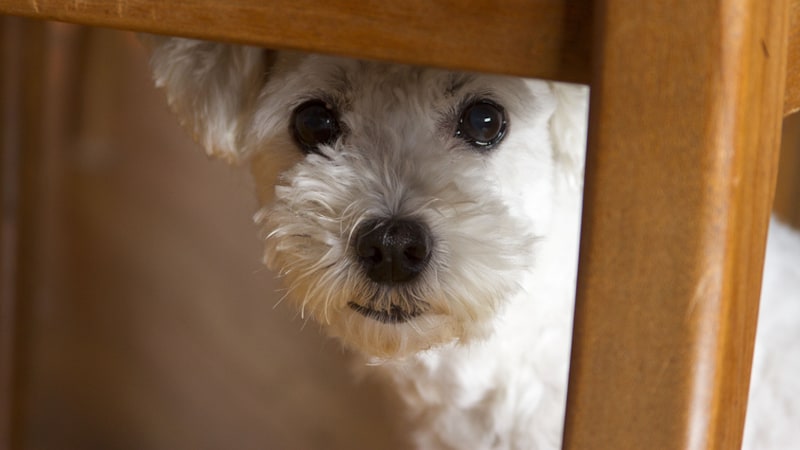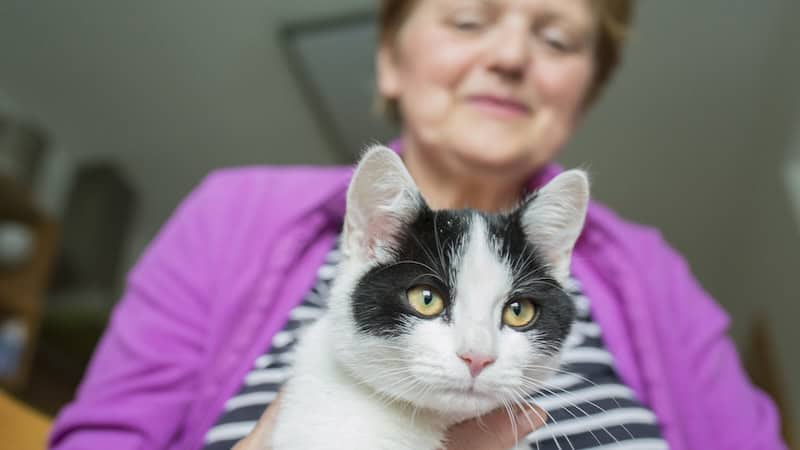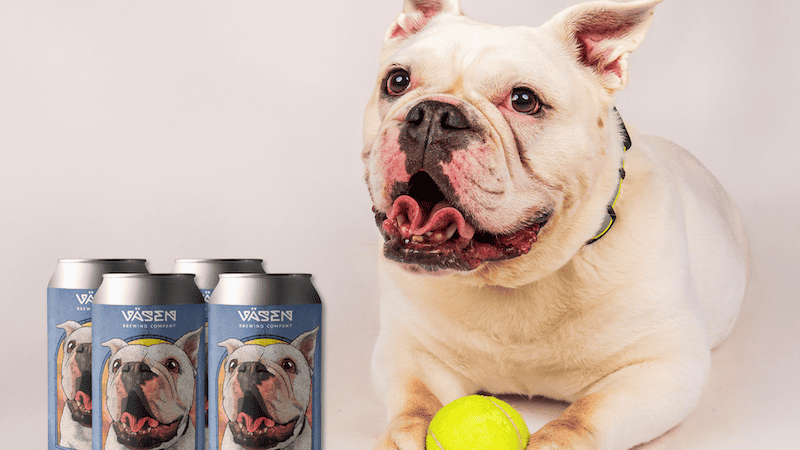Hope for a Poorly Socialized Rescue Dog
Will time and training do the trick?

An owner wonders if her poorly socialized rescue dog can be trained. Pet expert Cathy M. Rosenthal offers tips for getting the mini-poodle accustomed to other people. Plus, the owner of a 16-year-old cat is concerned about its hair growth problems.
Dear Cathy,
We adopted a 5-year-old female mini-Poodle that we named Sami. Sami was caged by a breeder in a puppy mill. Due to her lack of (social) experience, she is difficult to train. Sami doesn’t recognize the association of words to treats and actions. Therefore, positive reinforcement doesn’t work. She has no idea about the meaning of words she hears, such as her name, eat, out, walk, etc.
However, she recognizes clues to things, such as us putting on our jackets, rattling her leash, or preparing her meals. Sami also will let my husband do anything to her, but she avoids me. She is very cautious about everything but has come a long way since we adopted her. Your thoughts?
— Janis, Hartford, Connecticut
Dear Janis,
Dogs born in puppy mills don’t have the best start in life. They are raised in cages for six to 12 weeks waiting to be delivered to pet stores. Unfortunately, this growth period coincides with peak socialization when puppies easily approach people and are unafraid of new experiences.
At this stage, puppies should be gently handled, petted, and slowly exposed to other dogs, kids, stairs, grass, the vet’s office, kind strangers, etc. If they don’t interact or have limited interactions with people, they can develop fears that can be difficult, but not impossible, to untrain later.
Because your dog is already past the puppy stage, you will need to build her trust by developing a predictable routine. She must learn to trust her new home before she can trust experiences outside the home.
Next, slowly expose her to new experiences, like walking on a leash, on a sidewalk, or on grass. Expose her, slowly, to new surroundings, like taking different routes when you walk.
If she is nervous about meeting new people, expose her to friends and family she already trusts but who can wear disguises, like hats and sunglasses. Have them toss her treats from about 10 feet away, so she can associate these “new people” with something yummy. Do this before a meal so she is hungry, and use a high value treat, like pieces of boiled (unsalted) chicken to entice her.
It takes time to socialize an adult dog, but you can absolutely do it if you are patient and persistent with her training. Given time, she will learn to learn to trust you and your family. When dogs learn to trust, they become the most amazing companions. Please keep me posted on her progress.
Two tried-and-true methods for calming anxious dogs
Dear Cathy,
I have a 4-1/2 lb. female 16-year-old Persian cat who I have groomed every four months. For the last year, her fur has been taking longer to grow in some areas. The fur around her face, paws, tail, and butt all seems normal, but the fur appears to have stopped growing on the sides of her belly and ribs.
I am wondering if it’s a lack of minerals/vitamins. Her fur is not falling out; it’s just not growing. I’m not sure if that makes a difference. Otherwise, she is happy and healthy in every way. She eats, drinks, and uses the litter box.
She was at the vet a year ago for a complete checkup. The vet said she is great for her age. She’s also the only pet in the house and has no contact with other animals. Any thoughts?
— Vicki, Massapequa, New York
Dear Vicki,
Sometimes, a cat’s coat stops growing or grows slowly, depending on the time of year. Animals have four phases of annual hair growth. The anagen phase is when new hair grows. The catagen phase is when hair reaches its full length and stops growing. The Telogen phase is when the hair is neither growing nor shedding. And the exogen phase is when the hair sheds.
So, overall, it’s not abnormal for hair to stop growing for a while. But when hair grows inconsistently, especially when it hasn’t before, then it could be the symptom of an underlying health problem, like a thyroid problem or a hormonal imbalance or deficiency.
Since it has been a year, I recommend a visit to the vet and getting blood work to see if she has developed a health problem. Health problems can crop up quickly for senior pets, so consider bi-annual exams for any cat starting around 10 or 11 years old. At 16, she is a geriatric feline and things do start to slow down for them.
Going forward, ask your groomer to leave areas that are not growing alone to give them time to come back.
Cathy M. Rosenthal is a longtime animal advocate, author, columnist, and pet expert who has more than 25 years in the animal welfare field. She addresses reader questions as diverse as outdoor cat safety to bizarre dog behavior. Send your pet questions, stories, and tips to cathy@petpundit.com. Please include your name, city, and state. You can follow her @cathymrosenthal.
©2023 Tribune Content Agency, LLC


